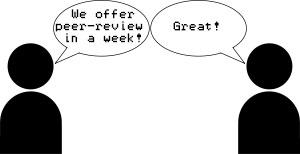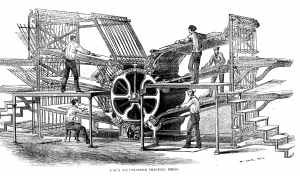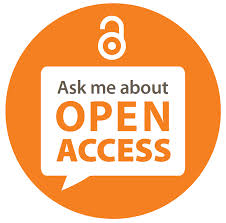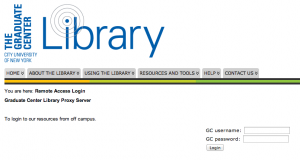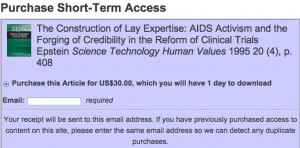Many of us may remember the Sokal hoax of 1996. Alan Sokal, a physics professor, successfully published a hoax article in Social Text in order to ridicule humanities scholarship. More recently, last fall, John Bohannon, a journalist for Science, sent out a significantly scientifically flawed “spoof” article about a wonder drug. He sent the article to 304 open access journals. The majority of these journals published the “spoof” article. Why did he do this? He wanted to prove that open access journals offer very little or no peer-review. Many of the journals were listed in the main portal for open access journals, the Directory of Open Access Journals aka DOAJ.
The first question to ask is why so many open access journals accepted the sham article. The answer, although not obvious, is that there is a dark side to open access: predatory publishers.
Predatory publishers have always existed in various guises. Most academics are familiar with the vanity-press style monograph publishers that exist to help authors get their work into print. Even in commercial journal publishing unethical practices are not atypical (try googling “fake Elsevier journals“). Junket-y conferences are another face of predatory publishing.
Nefarious publishers have always existed but the new twist comes with technology. Anyone can install a free publishing platform and call themselves a journal publisher. This is great but also problematic. New “gold” open access journals can be launched easily. Some open access journals charge authors article processing charges to help cover costs. This is most common in the STEM fields where authors build these fees into their grants and/or can get funding from their universities.
As in the past, there is good money to be made on the backs of desperate and/or naïve scholars rushing towards tenure and promotion. Now the process is as simple as submitting a paper online.
Predatory publishers have mushroomed, spinning off vaguely named and copycat titled journals. Spam emails lure in new fish.
Many of us first learned about predatory publishers from a New York Times piece about Jeffrey Beall, an academic librarian, and his crusade to save us from the predators by listing them on his blog. Beall’s “list” was the A to Z of what we knew about predatory publishing. And then came Bohannon.
Bohannon’s sting caused a firestorm, but his method was flawed. Why not also probe how many toll-access publishers would accept the article? Bohannon’s conclusions were dubious–the majority of journals in the Directory of Open Access Journals actually rejected the article and a majority on Beall’s list accepted the article. Yet in the aftermath, there has been considerable hand-wringing. The question was now:
Who is policing open access?
Those creepy predatory journals are giving open access a bad name!
In response, I recommend that everyone read “On the mark? Responses to a sting” as well as librarian Barbara Fister’s thoughtful comments on the issue. There are also helpful organizations including OASPA, COPE, and SPARC Europe Seal for Open Access Journals in addition to the broader SPARC organization.
But what happens when a discovery tool takes on a bigger role?
DOAJ tightened inclusion standards after the sting and now offers a seal of approval. The new standards are not without flaws: (paid) registration with CrossRef is difficult for small and/or one-off open access publishers. However, DOAJ should be lauded for their efforts to keep the predatory publishers at bay. At least 114 journals were removed from DOAJ after the Bohannon scandal.
But Dorothea Salo in the aforementioned group commentary “On the mark?” notes:
This is progress, but a cursory examination of the new DOAJ criteria shows that they are crediting good practices such as peer review, rather than punishing bad practices such as email spam, falsely-listed editors, and junkety conferences. … Its program simply does not suffice to eliminate all the scammers and scammy practices.
It’s still too early to tell if DOAJ’s efforts will make a difference. We need much more public education about gold open access and how it differs entirely from predatory publishing. The recent scandal involving Springer and IEEE publishing 120 “gibberish” papers is further evidence that scholarly communications based on peer-review needs reform. Is open peer-review the answer? Are predatory publishers just an expression of a transitional period and will they wither as open access grows to the stage where it is widely understood and embraced?


